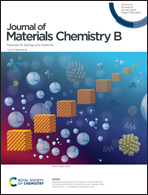Native and engineered extracellular vesicles: novel tools for treating liver disease
Abstract
Liver diseases are classified as acute liver damage and chronic liver disease, with recurring liver damage causing liver fibrosis and progression to cirrhosis and hepatoma. Liver transplantation is the only effective treatment for end-stage liver diseases; therefore, novel therapies are required. Extracellular vesicles (EVs) are endogenous nanocarriers involved in cell-to-cell communication that play important roles in immune regulation, tissue repair and regeneration. Native EVs can potentially be used for various liver diseases owing to their high biocompatibility, low immunogenicity and tissue permeability and engineered EVs with surface modification or cargo loading could further optimize therapeutic effects. In this review, we firstly introduced the mechanisms and effects of native EVs derived from different cells and tissues to treat liver diseases of different etiologies. Additionally, we summarized the possible methods to facilitate liver targeting and improve cargo-loading efficiency. In the treatment of liver disease, the detailed engineered methods and the latest delivery strategies were also discussed. Finally, we pointed out the limitations and challenges of EVs for future development and applications. We hope that this review could provide a useful reference for the development of EVs and promote the clinical translation.

- This article is part of the themed collection: Journal of Materials Chemistry B Recent Review Articles


 Please wait while we load your content...
Please wait while we load your content...